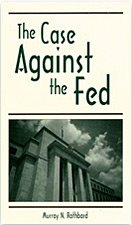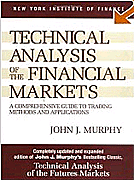Jon Herring: Gold is manipulated but buy it anyway
A contributor to Investors Daily Edge, Jon Herring, takes note of GATA's work in his new essay:
The United States Bureau of Labor Statistics has an “inflation calculator” on their website. It allows you to enter an amount of money and a previous year and then tells you how much money you would need to have today to match the same buying power.
Just for kicks, I put the year 1980 in the calculator to see what would come out. If you had $25 then, you would need $64.54 today to purchase the same goods and services. If you had $5,000 then, you would need $12,907 to have the same buying power today.
So, what if you had $850 in 1980? How much would you need today to match the same buying power? The government tells us that number is $2,194. Perhaps you see where I am going with this.
The previous all-time high in gold was $850 an ounce, reached in 1980. So, by the government’s own calculation (which many have shown to be biased to the downside), you would need about 160% more dollars today to match the same buying power you had in 1980.
So how is it that gold – “the world’s greatest inflation hedge” – is roughly the same price today that it was in 1980, after 30 years of inflation? Keep in mind that gold only hit $850 for one day in 1980. The average price of gold that month was only $650. But the point is still valid.
The biggest reason is… manipulation.
It used to be that you didn’t speak about market manipulation in polite company. Everyone knows those conspiracies don’t exist. Who could do such a thing? We now know those sentiments are woefully naïve. There is now a deep and wide body of evidence that points to willful and ongoing, official and unofficial suppression of gold prices. Much of this evidence has been compiled and documented by the good folks at the Gold Anti-Trust Action Committee (www.gata.org).
Why would politicians, central bankers, commercial banks and Wall Street institutions have any interest in suppressing the price of gold? That’s easy. Gold is like a burglar alarm. It serves notice that politicians are spending more than they take in. And it emits a screeching siren when central bankers inflate the money supply. Wall Street and commercial banks hate gold because it represents competition for your investment dollars and savings… and because they can’t make any money on it.
A rapidly rising gold price signals to the masses that all is NOT right with our money and in the financial system. When the price of gold is going up, savers and investors begin to wonder why in the world they are holding dollars in the bank. There are some VERY powerful interests that would like to keep the price of gold in check.
So, how do they do it?
There are a number of ways the banking and political establishment have tried to keep a lid on gold. The first is simply the war of propaganda. Make gold savers out to be the lunatic fringe and denigrate gold itself. This is where the term “gold bug” came from. It was meant to be a disparaging term for people who believe in sound money and honest government. This is also where the talk of gold as a “barbarous relic” originated.
But that argument falls on its face immediately. If gold is such an ancient “relic” and so unnecessary and un-useful in today’s world of modern finance, then why do central banks still insist on holding gold in their vaults? And why do these same banks use gold among themselves to settle final accounts?
They do this because they don’t trust each other. They know that paper money is too easy to fabricate from nothing, while gold is rare and must be labored into existence. Despite what they say, central bankers know that gold is vitally important to the modern financial system and that there is no substitute for it.
Other than the war of words, the banking and political establishment put pressure on gold in other ways as well. One of these is central bank “leasing” of gold. I put leasing in quotes because usually when you lease something out, you expect to get it back (more on that in a moment). For years, central banks have been “leasing” the gold in their vaults to “bullion banks,” operated by institutions such as Goldman, Citi, Morgan, HSBC, etc.
And what a lucrative racket it has been. For years, the bullion banks received massive amounts of gold from official vaults at the “good buddy” interest rate of about 1% a year. They then sold this gold into the market and invested the proceeds. How much money could you have made in the ‘80s and ‘90s if you were able to borrow billions of dollars at 1% and reinvest those dollars at 5% risk-free… or even higher if you were willing to take on some risk? Let’s just say it was a pretty good deal, if you could get it.
Not only has this provided a welcome source of cheap capital for the insider banks, but a near constant supply of gold to the market meant that there were always big sellers to keep pressure on the price.
By no means is this the only way gold has been manipulated, but it is certainly one way. But for this to work in the bullion banks favor, the price of gold must fall or remain flat. Borrowing billions of dollars worth of gold at $300 an ounce and paying it back at $600 an ounce is a recipe for bankruptcy. So you can imagine the enormous incentive within the system to keep the price of gold from rising.
But they have not succeeded. These gold leasing operations were running full tilt in the early part of this decade when gold was in the $200s and $300s. Gold is now three times higher than it was then. And these banks are on the hook for billions of dollars worth of gold.
But remember, these are insiders. By now you know what that means. They have no intention to pay back the tons of gold they have borrowed. And the central banks have no intentions of calling these loans. To do so would require the bullion banks to buy gold at the market, paying prices several times higher than the price at which the gold was borrowed. This would instantly bankrupt these banks, though we know they would be insolvent anyway without taxpayer bailouts. Therefore, the central banks simply roll the “leases” over, again and again.
So, back to the subject of manipulation. Why would you invest in a market that is so clearly manipulated? First, because it is the right thing to do to favor honest money over fraudulent money. But the other reason is that the establishment’s power to manipulate public opinion of gold and influence the market itself is becoming weaker and weaker, and will soon fail altogether.
I was investing in gold and silver and precious metals equities when gold was $260 an ounce. The cries about manipulation of the market were as loud then as they are today. The manipulation was real. And yet, gold has risen 240% in that time. Gold stocks have soared even higher. Despite the best efforts of the establishment, gold has climbed steadily for eight straight years. And considering what is happening in the monetary realm, this trend shows no signs of abating.
However the manipulation due to central bank leasing operations will most certainly abate. These banks do not have an unlimited amount of gold to sell into the market. And their appetite for doing so is clearly waning. Central banks around the world are now adding gold to their coffers rather than divesting.
And despite propaganda efforts to the contrary, the public is gradually waking up to the fraudulent nature of the fiat-based monetary system and the shaky notion of holding unsound dollars in unsound banks.
In the realm of world finance, gold is a tiny market. It won’t take a huge shift in sentiment to stir up a massive increase in demand… demand that could not be met by the world’s miners and would have to result in a sharp increase in prices. Sentiment has already turned. But not nearly to the degree it will when the specter of inflation returns.
That day is coming. Got gold?
To Your Success,
Jon Herring
***
"Gold Is Manipulated ... And You Should Buy It Anyway"
The United States Bureau of Labor Statistics has an “inflation calculator” on their website. It allows you to enter an amount of money and a previous year and then tells you how much money you would need to have today to match the same buying power.
Just for kicks, I put the year 1980 in the calculator to see what would come out. If you had $25 then, you would need $64.54 today to purchase the same goods and services. If you had $5,000 then, you would need $12,907 to have the same buying power today.
So, what if you had $850 in 1980? How much would you need today to match the same buying power? The government tells us that number is $2,194. Perhaps you see where I am going with this.
The previous all-time high in gold was $850 an ounce, reached in 1980. So, by the government’s own calculation (which many have shown to be biased to the downside), you would need about 160% more dollars today to match the same buying power you had in 1980.
So how is it that gold – “the world’s greatest inflation hedge” – is roughly the same price today that it was in 1980, after 30 years of inflation? Keep in mind that gold only hit $850 for one day in 1980. The average price of gold that month was only $650. But the point is still valid.
The biggest reason is… manipulation.
It used to be that you didn’t speak about market manipulation in polite company. Everyone knows those conspiracies don’t exist. Who could do such a thing? We now know those sentiments are woefully naïve. There is now a deep and wide body of evidence that points to willful and ongoing, official and unofficial suppression of gold prices. Much of this evidence has been compiled and documented by the good folks at the Gold Anti-Trust Action Committee (www.gata.org).
Why would politicians, central bankers, commercial banks and Wall Street institutions have any interest in suppressing the price of gold? That’s easy. Gold is like a burglar alarm. It serves notice that politicians are spending more than they take in. And it emits a screeching siren when central bankers inflate the money supply. Wall Street and commercial banks hate gold because it represents competition for your investment dollars and savings… and because they can’t make any money on it.
A rapidly rising gold price signals to the masses that all is NOT right with our money and in the financial system. When the price of gold is going up, savers and investors begin to wonder why in the world they are holding dollars in the bank. There are some VERY powerful interests that would like to keep the price of gold in check.
So, how do they do it?
There are a number of ways the banking and political establishment have tried to keep a lid on gold. The first is simply the war of propaganda. Make gold savers out to be the lunatic fringe and denigrate gold itself. This is where the term “gold bug” came from. It was meant to be a disparaging term for people who believe in sound money and honest government. This is also where the talk of gold as a “barbarous relic” originated.
But that argument falls on its face immediately. If gold is such an ancient “relic” and so unnecessary and un-useful in today’s world of modern finance, then why do central banks still insist on holding gold in their vaults? And why do these same banks use gold among themselves to settle final accounts?
They do this because they don’t trust each other. They know that paper money is too easy to fabricate from nothing, while gold is rare and must be labored into existence. Despite what they say, central bankers know that gold is vitally important to the modern financial system and that there is no substitute for it.
Other than the war of words, the banking and political establishment put pressure on gold in other ways as well. One of these is central bank “leasing” of gold. I put leasing in quotes because usually when you lease something out, you expect to get it back (more on that in a moment). For years, central banks have been “leasing” the gold in their vaults to “bullion banks,” operated by institutions such as Goldman, Citi, Morgan, HSBC, etc.
And what a lucrative racket it has been. For years, the bullion banks received massive amounts of gold from official vaults at the “good buddy” interest rate of about 1% a year. They then sold this gold into the market and invested the proceeds. How much money could you have made in the ‘80s and ‘90s if you were able to borrow billions of dollars at 1% and reinvest those dollars at 5% risk-free… or even higher if you were willing to take on some risk? Let’s just say it was a pretty good deal, if you could get it.
Not only has this provided a welcome source of cheap capital for the insider banks, but a near constant supply of gold to the market meant that there were always big sellers to keep pressure on the price.
By no means is this the only way gold has been manipulated, but it is certainly one way. But for this to work in the bullion banks favor, the price of gold must fall or remain flat. Borrowing billions of dollars worth of gold at $300 an ounce and paying it back at $600 an ounce is a recipe for bankruptcy. So you can imagine the enormous incentive within the system to keep the price of gold from rising.
But they have not succeeded. These gold leasing operations were running full tilt in the early part of this decade when gold was in the $200s and $300s. Gold is now three times higher than it was then. And these banks are on the hook for billions of dollars worth of gold.
But remember, these are insiders. By now you know what that means. They have no intention to pay back the tons of gold they have borrowed. And the central banks have no intentions of calling these loans. To do so would require the bullion banks to buy gold at the market, paying prices several times higher than the price at which the gold was borrowed. This would instantly bankrupt these banks, though we know they would be insolvent anyway without taxpayer bailouts. Therefore, the central banks simply roll the “leases” over, again and again.
So, back to the subject of manipulation. Why would you invest in a market that is so clearly manipulated? First, because it is the right thing to do to favor honest money over fraudulent money. But the other reason is that the establishment’s power to manipulate public opinion of gold and influence the market itself is becoming weaker and weaker, and will soon fail altogether.
I was investing in gold and silver and precious metals equities when gold was $260 an ounce. The cries about manipulation of the market were as loud then as they are today. The manipulation was real. And yet, gold has risen 240% in that time. Gold stocks have soared even higher. Despite the best efforts of the establishment, gold has climbed steadily for eight straight years. And considering what is happening in the monetary realm, this trend shows no signs of abating.
However the manipulation due to central bank leasing operations will most certainly abate. These banks do not have an unlimited amount of gold to sell into the market. And their appetite for doing so is clearly waning. Central banks around the world are now adding gold to their coffers rather than divesting.
And despite propaganda efforts to the contrary, the public is gradually waking up to the fraudulent nature of the fiat-based monetary system and the shaky notion of holding unsound dollars in unsound banks.
In the realm of world finance, gold is a tiny market. It won’t take a huge shift in sentiment to stir up a massive increase in demand… demand that could not be met by the world’s miners and would have to result in a sharp increase in prices. Sentiment has already turned. But not nearly to the degree it will when the specter of inflation returns.
That day is coming. Got gold?
To Your Success,
Jon Herring
***
Labels: GATA, gold, market manipulation















![[Most Recent Quotes from www.kitco.com] [Most Recent Quotes from www.kitco.com]](http://www.kitco.com/images/live/t24_au_en_usoz_6.gif)
![[Most Recent Quotes from www.kitco.com] [Most Recent Quotes from www.kitco.com]](http://www.kitco.com/images/live/au_go_0030_ny.gif)
![[Most Recent Quotes from www.kitco.com] [Most Recent Quotes from www.kitco.com]](http://www.kitco.com/images/live/au_go_0365_ny.gif)
![[Most Recent Quotes from www.kitco.com] [Most Recent Quotes from www.kitco.com]](http://kitconet.com/charts/metals/silver/t24_ag_en_usoz_4.gif)

















0 ΣΧΟΛΙΑ (COMMENTS):
Post a Comment
<< Home